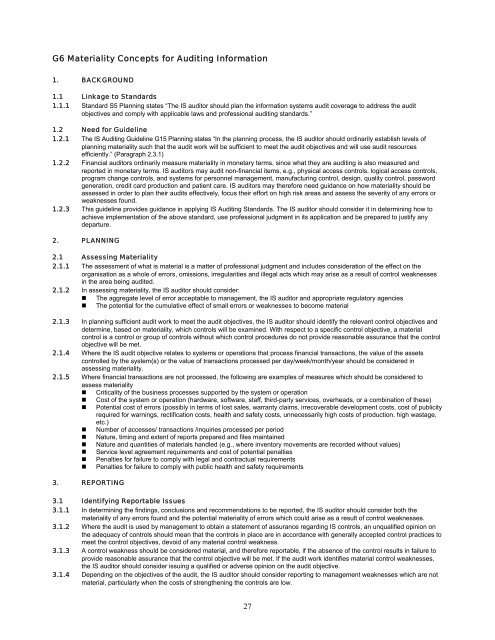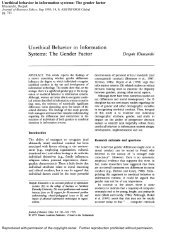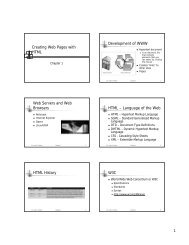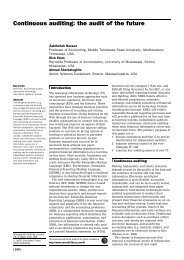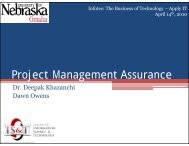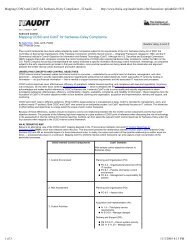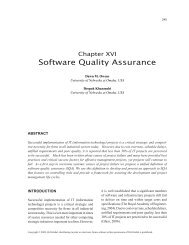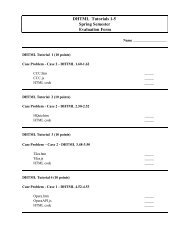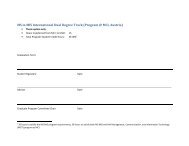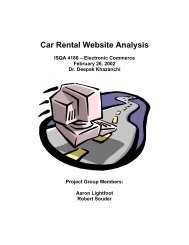IS Standards, Guidelines and Procedures for Auditing and Control ...
IS Standards, Guidelines and Procedures for Auditing and Control ...
IS Standards, Guidelines and Procedures for Auditing and Control ...
Create successful ePaper yourself
Turn your PDF publications into a flip-book with our unique Google optimized e-Paper software.
G6 Materiality Concepts <strong>for</strong> <strong>Auditing</strong> In<strong>for</strong>mation1. BACKGROUND1.1 Linkage to <strong>St<strong>and</strong>ards</strong>1.1.1 St<strong>and</strong>ard S5 Planning states “The <strong>IS</strong> auditor should plan the in<strong>for</strong>mation systems audit coverage to address the auditobjectives <strong>and</strong> comply with applicable laws <strong>and</strong> professional auditing st<strong>and</strong>ards.”1.2 Need <strong>for</strong> Guideline1.2.1 The <strong>IS</strong> <strong>Auditing</strong> Guideline G15 Planning states “In the planning process, the <strong>IS</strong> auditor should ordinarily establish levels ofplanning materiality such that the audit work will be sufficient to meet the audit objectives <strong>and</strong> will use audit resourcesefficiently.” (Paragraph 2.3.1)1.2.2 Financial auditors ordinarily measure materiality in monetary terms, since what they are auditing is also measured <strong>and</strong>reported in monetary terms. <strong>IS</strong> auditors may audit non-financial items, e.g., physical access controls, logical access controls,program change controls, <strong>and</strong> systems <strong>for</strong> personnel management, manufacturing control, design, quality control, passwordgeneration, credit card production <strong>and</strong> patient care. <strong>IS</strong> auditors may there<strong>for</strong>e need guidance on how materiality should beassessed in order to plan their audits effectively, focus their ef<strong>for</strong>t on high risk areas <strong>and</strong> assess the severity of any errors orweaknesses found.1.2.3 This guideline provides guidance in applying <strong>IS</strong> <strong>Auditing</strong> <strong>St<strong>and</strong>ards</strong>. The <strong>IS</strong> auditor should consider it in determining how toachieve implementation of the above st<strong>and</strong>ard, use professional judgment in its application <strong>and</strong> be prepared to justify anydeparture.2. PLANNING2.1 Assessing Materiality2.1.1 The assessment of what is material is a matter of professional judgment <strong>and</strong> includes consideration of the effect on theorganisation as a whole of errors, omissions, irregularities <strong>and</strong> illegal acts which may arise as a result of control weaknessesin the area being audited.2.1.2 In assessing materiality, the <strong>IS</strong> auditor should consider:• The aggregate level of error acceptable to management, the <strong>IS</strong> auditor <strong>and</strong> appropriate regulatory agencies• The potential <strong>for</strong> the cumulative effect of small errors or weaknesses to become material2.1.3 In planning sufficient audit work to meet the audit objectives, the <strong>IS</strong> auditor should identify the relevant control objectives <strong>and</strong>determine, based on materiality, which controls will be examined. With respect to a specific control objective, a materialcontrol is a control or group of controls without which control procedures do not provide reasonable assurance that the controlobjective will be met.2.1.4 Where the <strong>IS</strong> audit objective relates to systems or operations that process financial transactions, the value of the assetscontrolled by the system(s) or the value of transactions processed per day/week/month/year should be considered inassessing materiality.2.1.5 Where financial transactions are not processed, the following are examples of measures which should be considered toassess materiality• Criticality of the business processes supported by the system or operation• Cost of the system or operation (hardware, software, staff, third-party services, overheads, or a combination of these)• Potential cost of errors (possibly in terms of lost sales, warranty claims, irrecoverable development costs, cost of publicityrequired <strong>for</strong> warnings, rectification costs, health <strong>and</strong> safety costs, unnecessarily high costs of production, high wastage,etc.)• Number of accesses/ transactions /inquiries processed per period• Nature, timing <strong>and</strong> extent of reports prepared <strong>and</strong> files maintained• Nature <strong>and</strong> quantities of materials h<strong>and</strong>led (e.g., where inventory movements are recorded without values)• Service level agreement requirements <strong>and</strong> cost of potential penalties• Penalties <strong>for</strong> failure to comply with legal <strong>and</strong> contractual requirements• Penalties <strong>for</strong> failure to comply with public health <strong>and</strong> safety requirements3. REPORTING3.1 Identifying Reportable Issues3.1.1 In determining the findings, conclusions <strong>and</strong> recommendations to be reported, the <strong>IS</strong> auditor should consider both themateriality of any errors found <strong>and</strong> the potential materiality of errors which could arise as a result of control weaknesses.3.1.2 Where the audit is used by management to obtain a statement of assurance regarding <strong>IS</strong> controls, an unqualified opinion onthe adequacy of controls should mean that the controls in place are in accordance with generally accepted control practices tomeet the control objectives, devoid of any material control weakness.3.1.3 A control weakness should be considered material, <strong>and</strong> there<strong>for</strong>e reportable, if the absence of the control results in failure toprovide reasonable assurance that the control objective will be met. If the audit work identifies material control weaknesses,the <strong>IS</strong> auditor should consider issuing a qualified or adverse opinion on the audit objective.3.1.4 Depending on the objectives of the audit, the <strong>IS</strong> auditor should consider reporting to management weaknesses which are notmaterial, particularly when the costs of strengthening the controls are low.27


